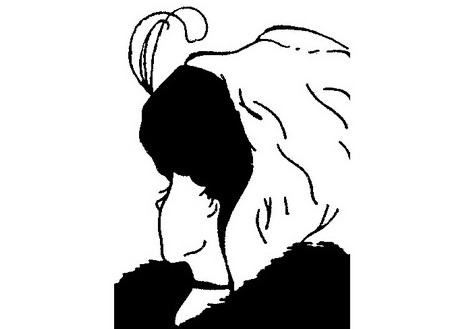 As highlighted by this artwork by W.E. Hill, perception powerfully influences what we see. Looking at this picture some will see a young woman staring off in the distance, others an elderly woman sadly looking downward. Similarly, as educators, parents, or professionals, our perceptions can cause us to look at the same child and reach different conclusions depending on the mindset from which we are operating. Mindset research aims to help people shift their perceptions about the causes of success or failure.
As highlighted by this artwork by W.E. Hill, perception powerfully influences what we see. Looking at this picture some will see a young woman staring off in the distance, others an elderly woman sadly looking downward. Similarly, as educators, parents, or professionals, our perceptions can cause us to look at the same child and reach different conclusions depending on the mindset from which we are operating. Mindset research aims to help people shift their perceptions about the causes of success or failure.
As the National Institute of Medicine and the American Psychiatric Association highlight, understanding exactly why a child misbehaves or struggles to learn is a complex question with many variables (American Psychiatric Association, 2013; Ruth, 2006; Simenson, 2006). A child's behavior is impacted by everything from a child's inherited traits to the day's weather. In order to better understand the impact our mindset can have on our perceptions of student problem behavior it is worthwhile to use a common scenario in education:
As an example, we can examine how the mindset of different hypothetical teachers can lead to radically different interpretations of a child's actions. Defiance is one of the most common problem behaviors in education, making up as much as 40% of discipline referrals in some districts. A common situation might be a fifth grade student who regularly ignores teacher directions and when the teacher confronts him about this behavior he escalates resulting in name calling that causes him to be sent to the office. In our example, this has been happening regularly but seems to be escalating in frequency and intensity. As the teacher finds a quiet moment to reflect and attempts to understand "why" a child would treat her this way her perception will be influenced by what mindset she is utilizing. Depending on which mindset the teacher adopts to understand the defiant behavior the conclusions and interventions that develop may differ.
Fixed Perspective #1: Character is Fixed
Problem behavior in general and defiant behavior in particular often feels like an attack on the teacher's authority. Teachers operating from a fixed mindset tend to interpret this behavior as a result of the character of the child and indication of deviance or mental illness. A teacher who brings a fixed mindset to understand the child's defiance is likely to adopt interpretations and then develop interventions that focus on a need to "get tough" or to "not let the child get away with it".
Fixed Perspective #2: Behaviors are Fixed
A second problematic interpretation of behavior can result when interpreting behavior through a fixed mindset. If a teacher comes to see the defiance as a result of a fixed trait in the child, the teacher may be inclined to simply ignore or avoid the child, as the child cannot help but misbehave. If a child is believed to be defiant due to a fixed trait then there is not a lot of point in working to change the child's behavior and it is best to accommodate the child by avoiding situations where he or she will need to comply with adult direction. With the well intentioned desire to understand and accommodate the child, the teacher removes demands from the student, lowering expectations and ensuring he does not learn the skills or value of rule-following behavior.
Growth Perspective: Character and Behaviors are Learned
Teachers who bring a growth mindset to interpreting a child's problem behavior are likely to adopt more of an instructional approach to behavior. Teachers in a growth mindset are likely to see problem behaviors as skill deficits, not person deficits. With this understanding they will develop a plan to help the child acquire new skills to express him or herself in more socially appropriate ways. Returning to our defiant student, a growth mindset teacher will likely understand that the behavior is the child telling the teacher, "I'm not ready to work right now". Understanding this, a teacher can then develop procedures and opportunities for practice so the child can learn how to communicate this in a more socially appropriate way.
Teachers in a growth mindset may also be able to come to a better understanding of the underlying factors that drive the child's defiance. Teachers in a fixed mindset are more likely to interpret the defiance as an indication of "who" that child is as a person. In contrast a growth minded teacher may dig deeper, able to separate the behavior from the person. This can allow the teacher to understand that the child is trying to communicate something in an unskilled manner rather than it being an expression of his character. In this case, the teacher may discover the child is defiant in order to avoid work that is beyond his skill level. Which, is a common contributing factor to student defiance. This understanding allows the growth minded teacher to address the underlying issue and help the student develop more constructive ways to express his struggles.
The perspectives adults adopt when attempting to understand a child's problem behavior can lead to different behavior management strategies. The infographic below highlights how the different assumptions created by differing mindset perspectives can lead to different interventions and supports for students engaging in problem behavior. When adults adopt a fixed mindset to respond to problem behavior it may lead them to the conclusion that the child lacks the capacity to control his or her behavior, and doing so creates two potentially problematic strategies: "getting tough" so the student doesn't get away with it or avoiding situations that may cause the child to misbehave. If instead, a growth mindset is adopted, the teacher is more likely to focus on teaching the skills the child needs so that she can express herself in a more socially appropriate way. For more information on how teachers can work to develop a growth mindset, review Mindset Works' MindsetMaker Online Professional Development Course.
As educators there are often many pressures to adopt a fixed mindset when analyzing problem behavior. The above simplified example does not attempt to capture the complex process of understanding a child's behavior. Rather it aims to highlight the how our mindset as adults shapes the perception through which we interpret a child's behavior. It is important to remember that behavior is learned, just as comma placement, multiplying fractions or sentence structure is. In order to help students learn more socially appropriate ways to express themselves it is important we, as educators, maintain a growth mindset perspective.
About the Author
Dustin Bindreiff has trained and coached over sixty-five schools to implement PBIS across the west coast. He began his educational career as a instructional aid, later created a nonprofit mentoring program, then taught middle school and special education before becoming a behavior specialist and PBIS coach.








